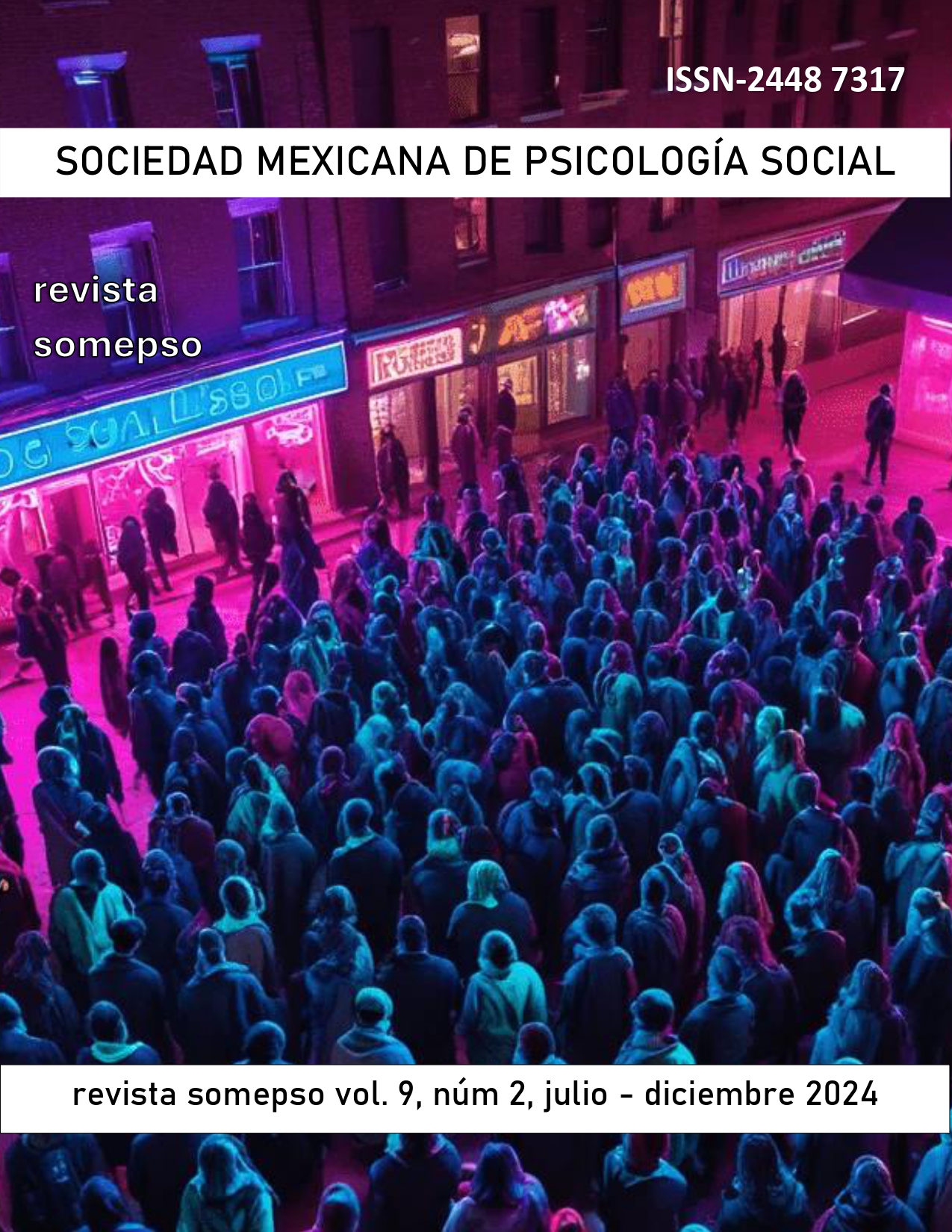In the cement desert: migratory routes of south americans and central americans through mexico
Main Article Content
Abstract
The objective of the research was to identify the different areas of expulsion and destination of migrants who travel through Mexican territory to identify the migratory routes they have followed and to which they intend to go. The migratory routes from South America and Central America that head to the United States make Mexico a transit country, with routes already marked in which the State of Mexico recently appears in the area known as the Toluca Valley. We worked with 157 Central and South American migrants, of which 93 were men and 64 women. With ages between 14 and 57 years old. They had left their country for 1 to 15 days to undertake the trip to the United States and were staying at the Prosecutor's Office Shelter. A self-created survey was applied that located demographic and migration data and a map that allowed the migratory route to be constructed. The routes traced with the migrants' stories allow us to locate the states, cities and critical points where they are victims of the violation of their human rights.
Article Details

This work is licensed under a Creative Commons Attribution 4.0 International License.
Creemos firmemente que el acceso al conocimiento debe estar libre de la lógica del enriquecimiento y no debe tener como objetivo el lucro personal o colectivo.
La Revista de la Sociedad Mexicana de Psicología Social de la SOMEPSO está bajo una licencia Creative Commons Reconocimiento-NoComercial 4.0 Internacional License.
References
Armijos-Orellana, A. C., Maldonado-Matute, J. M., González-Calle, M. J., & Guerrero-Maxi, P. F. (2022). Los motivos de la migración. Una breve revisión bibliográfica. Universitas, 37, 223–246. https://doi.org/10.17163/uni.n37.2022.09
Arango, J. (1985). Las leyes de las migraciones cien años después. En Ravenstein, E.G. (1885). The laws of Migration. Journal of the Royal Statistical Society. 48, 167-227. Revista española de investigaciones sociológicas [REIS], 32, 7-26.
Barragán-León, A. N. (2019). Cartografía social: lenguaje creativo para la investigación cualitativa. Sociedad y economía, (36), 139-159. https://doi.org/10.25100/sye.v0i36.7457
Basualdo, L., Domenech, E., & Pérez, E. (2019). Territorios de la movilidad en disputa: cartografías críticas para el análisis de las migraciones y las fronteras en el espacio sudamericano. REMHU, 27(57), 43–60. https://doi.org/10.1590/1980-85852503880005704
Barragán, D. F., Sánchez Corrales N y Cruz Castillo A.L (2020) Cartografía Social, usos y sospechas en el campo de la educación, Cartografía Social, usos y sospechas en el campo de la educación Utopía y Praxis Latinoamericana, vol. 25, (89), 179-198, Universidad del Zulia
Betancurth, D., Vélez, C., y Sánchez Corrales, N. (2020). Cartografía social: construyendo territorio a partir de los activos comunitarios en salud. Entramado,16(1), 138-151. https://doi.org/10.18041/1900-3803/entramado.1.6081
Castillas, R. (2008). Las rutas de los centroamericanos por México, un ejercicio de caracterización, actores principales y complejidades. Migración y desarrollo, (10), 157-174. https://acortar.link/f6UBqS
Ferrer, R., Palacio, J., Hoyos, O., & Madariaga, C. (2014). Proceso de aculturación y adaptación del inmigrante: características individuales y redes sociales. Psicología desde el Caribe, 31(3), 557-576.
Flores O. C. H., Castillo P. R. A y Rodríguez E. M. de L (2021) Inmigración ilegal y actividad económica agregada en Estados Unidos: un análisis de series de tiempo. Paradigma económico. Revista de economía regional y sectorial, 13 (2). https://acortar.link/NJT44C
Goncalves, M., & Montero, M. (2006). Las redes comunitarias. En M. Montero (Ed.), Teoría y práctica de la psicología comunitaria: La tensión entre comunidad y sociedad (pp. 173–201). Paidós.
Hernández, Ó. M., (2016). Riesgos en la migración irregular de menores mexicanos a Estados Unidos. Norteamérica. Revista Académica del CISAN-UNAM, 11(2), 63-83.
Lewis, A. (1954). Economic development with unlimited supplies of labor. The Manchester School of Economic and Social Studies, 22(2), 139–191.
Li, J. J. (2020). Mapa 2020 de casas del migrante, albergues y comedores para migrantes en México. BBVA Research. https://acortar.link/AvBK1Z
Llanos Reynoso, L. F. (2023). Los caminos de migrantes que pasan por México: Análisis desde la teoría de grafos. Migraciones Internacionales, 14(3). https://doi.org/10.33679/rmi.v1i1.2581
Martínez, G., Cobo, S.D y Narváez, J. C. (2015). Trazando rutas de la migración de tránsito irregular o no documentada por México. Perfiles latinoamericanos, 23(45), 127-155. https://acortar.link/R8H3Dm
Massey, D. S., Arango, J., Graeme, H., Kouaouci, A., Pellegrino, A., y Taylor, J. E. (2000). Teorías sobre la migración internacional: una reseña y una evaluación. Trabajo, 3, 5-49.
OIM. (2022). Migraciones sur-norte desde Sudamérica, rutas, vulnerabilidades y contextos del tránsito de migrantes extrarregionales. (Informes estratégicos de coyuntura N.1). https://bit.ly/3Egj4Xv
Pacheco, A., Lucca, N. y Wapner, S. (1984). El estudio de la migración: retos para la psicología social y la psicología ambiental. Revista Latinoamericana de Psicología, 16(2), 253-276
Piore, M. (1979). Birds of passage: Migrant labor in Industrial Societies. University Press.
Rädiker, S., & Kuckartz, U. (2020). Análisis de datos cualitativos con MAXQDA. Texto, Audio, Video. MAXQDA Press.
REDLAC. (2020). Violencia y protección en el norte de Centroamérica y México: Boletín N.º 11, noviembre 2020.
Unidad Política Migratoria, Registro e identidad de personas. (2024). Cartografía Migratoria: herramienta clave para el diseño de políticas migratorias. Movilidad en corto, 2(16). https://bit.ly/42wSfZm
Unidad de Política Migratoria. (s.f.) Glosario De Términos Relacionados Con El Programa Presupuestario P019-Coordinar La Política Migratoria. https://tinyurl.com/Glosar1o

